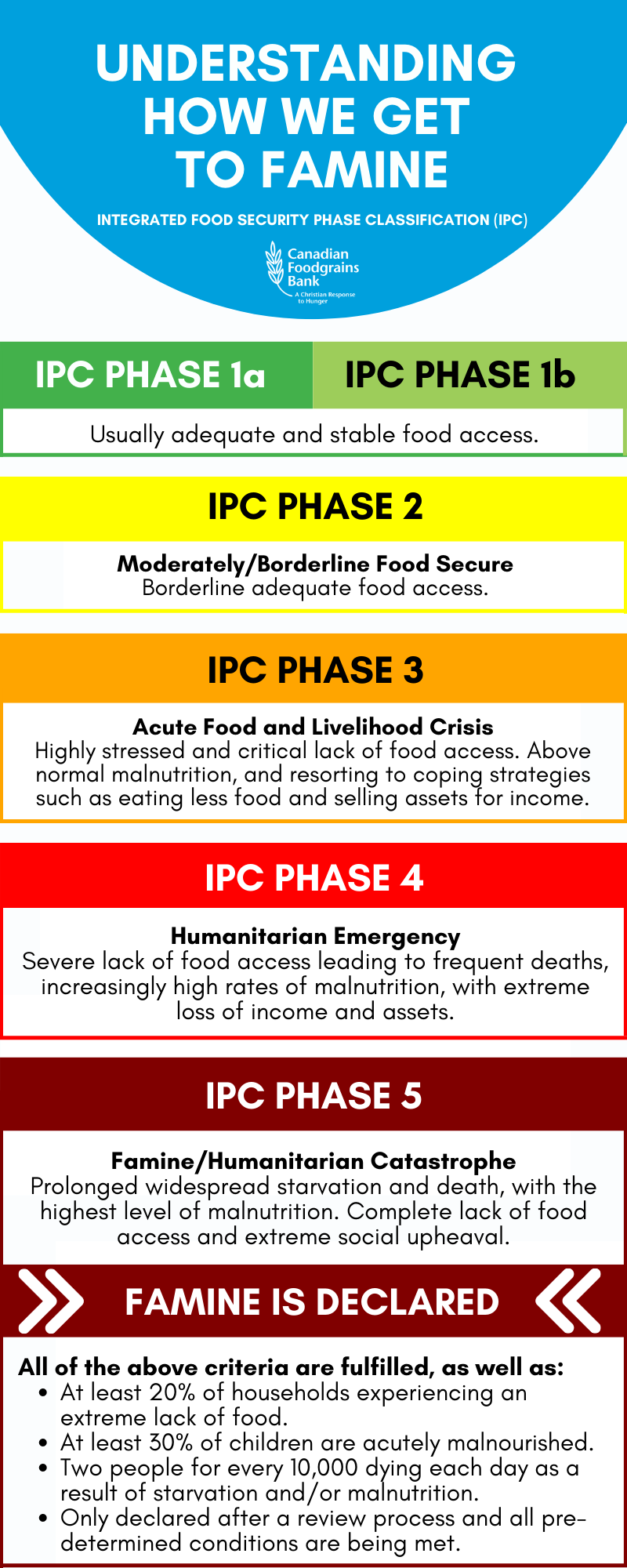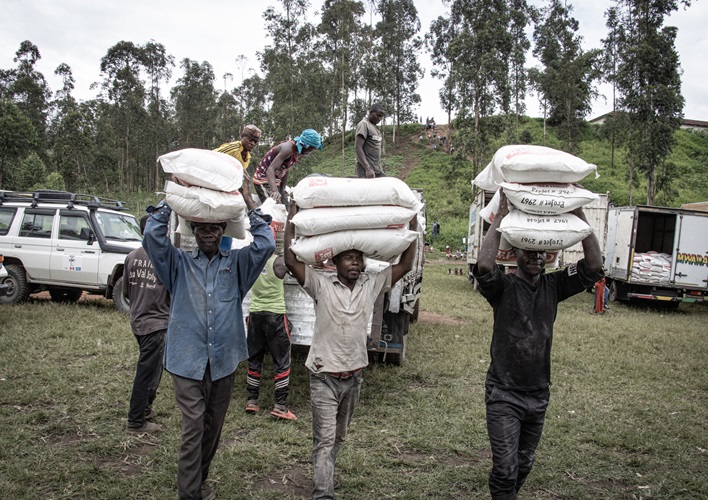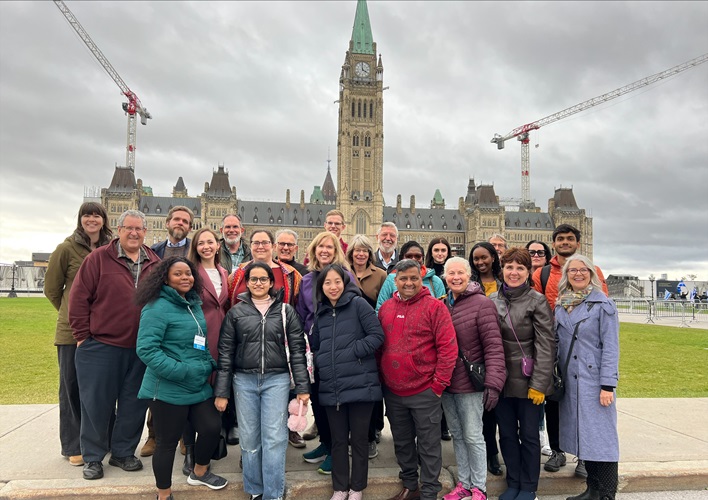We’re in the midst of the worst hunger crisis in decades, and famine is looming.
But famine is preventable – if we act now.
How do we get from ‘warning signs’ and ‘hunger’ to an “official” declaration of famine?
The Integrated Food Security Phase Classification (IPC) is multi-partner initiative used by the humanitarian sector to determine and understand the severity of food insecurity in a community. This is where we get our warning signs.
It all starts with the question of food security. When we say that people are food secure, it means that they can access nutritious food regularly. There’s good food available in their community and families can afford to buy enough and/or grow enough so that everyone can eat multiple nutritiously diverse meals every day.
When people are food insecure, it means getting food regularly isn’t a given… and just the act of ensuring a regular meal can be a stressor.
We’re not talking about skipping meals because a mom is too busy with everything she’s trying to do in a day – we mean she’s skipping meals because she’s trying to put a little bit of food into her children. And she’s doing this often. Depending where she is on the IPC scale, she might even be skipping days worth of food. At IPC level 4 and 5, there’s a possibility that even her children are enduring a day or days without food.

The IPC provides a snapshot of the current situation in about 40 countries, as well as projecting future conditions, and identifying key drivers of food insecurity such as an increase of violent conflicts, prolonged droughts or inflation driving food prices beyond what households can afford.
The IPC snapshot identifies regions as well. Sometimes you can see one country with various regions listed at different IPC levels. For instance, in May of 2022, Cameroon had regions listed at IPC 1, 2, 3 and 4.
Humanitarian food assistance typically begins at IPC Phase 3, where access to food is reaching critical levels. Once a community reaches IPC 3, humanitarian organizations must mobilize immediately, because a community can move from IPC 3 to IPC 5 very quickly.
At IPC 3, malnutrition levels are above normal, and families have started to resort to coping strategies, such as eating one meal a day, or selling their assets for immediate cash. While these strategies may help in the moment, they create an even more dire situation for families in the long-term, and create an added layer of vulnerability for future crises.
Just imagine a father who made his living as a carpenter selling his tools to feed his family. He knows what he is doing. He understands that when things get better, he will likely have to go into another form of debt to start working again… but when communities reach IPC 3, it means there aren’t a lot of jobs that can help you pay for food. You have to sell what you have to meet the immediate needs of your family. And hope for the best for the future.
Once communities reach IPC 4, people are not just hungry – they are starving.
And right now there are people living in communities at IPC 5. There are thousands of women, men and children in Afghanistan, Yemen, Ethiopia, Somalia, and South Sudan who are living on the edge of an official famine.
With this many people living so close to the edge, the resources don’t match up to the reality.
Food prices right now are skyrocketing in vulnerable communities. In some areas where Canadian Foodgrains Bank’s members’ partners are working, we’re hearing reports that the cost to feed a family of five for a month has doubled since last year. There are other communities where trying to find cooking oil to distribute has been a challenge. In other areas, vendors have had to change their contracts because their prices have increased so dramatically. Budgets are needing to be adjusted quickly so that we can respond quickly.
Without enough money to buy the food to feed the millions of people in IPC 3, 4 and 5, heartbreaking decisions have to be made. Do we feed less to more people, or feed just enough to less people? Already the World Food Programme has announced that in some countries where they work, they are forced to turn away hungry households in order to help starving households.
Everyone deserves food. All are made in the image of God, and it is God’s desire that no person should go hungry.
Famine is preventable, and it can be stopped.
It is our responsibility to stop famine before it’s too late.
Join us.




